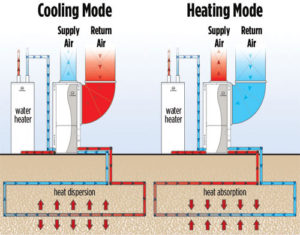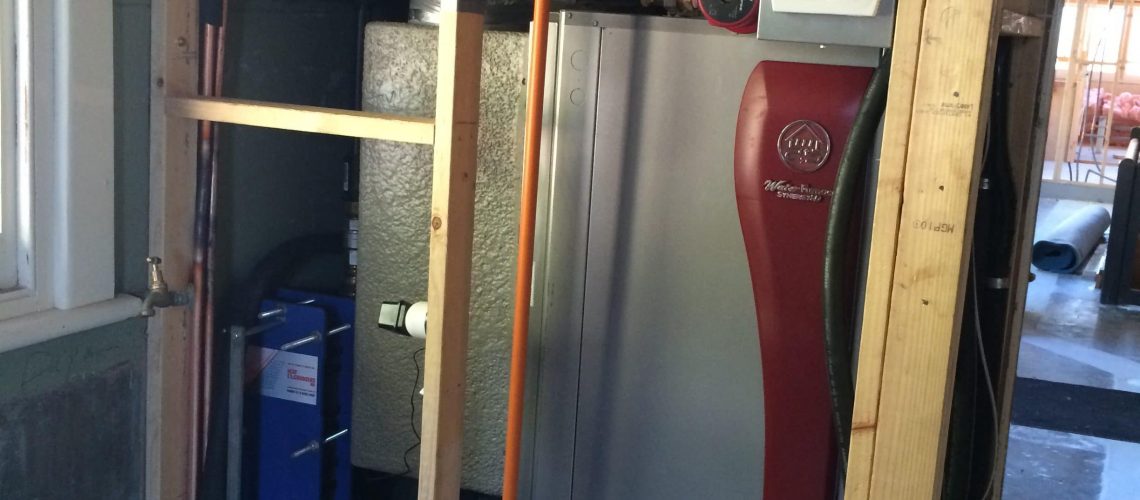In our last blog post we looked at the earth and how we utilise it with ground loops as a heat exchanger for heat absorption or heat rejection in geoexchange heating and cooling systems.
Due the wide operating range of a geoexchange heat pump they are not only restricted to being connected to loops that are installed below the ground.
A quick recap on how Geoexchange works
A few meters beneath the surface, the earth’s temperature remains fairly constant. Geoexchange takes advantage of this constant temperature to provide extremely efficient heating and cooling.
In winter, a water solution circulating through pipes buried in the ground absorbs heat from the earth and carries it into the home. Inside the home a heat pump is utilised to concentrate the earth’s thermal energy and then to transfer it to either water for a hydronic underfloor, a hydronic radiator system or to air circulated through ductwork to heat the home.
In the summer, the process is reversed. The heat inside the home is extracted from the air and transferred through the heat pump to the ground loop piping. The water solution in the ground loop then carries the excess heat back to the earth.

Further heat exchange options for geoexchange systems
- Open well/ Bore
This method is often referred to as an “open loop” system. As in our closed loop systems that has our heat exchange loop buried beneath the ground and uses the stable tempretures there this method uses the water stored below in aquifers that sits at the same temperature as the ground around it. To use the water below the ground we need to extract it first. To do this we can utilise a standard water bore, the water can then be pumped through the internal heat exchange inside the heat pump were heat is either absorbed when the heat pump is in heating mode or rejected too when running in cooling. Depending where you are situated different options are available for the use of the water after it has been used for the system including:
- Reinjection into the ground
- Irrigation
- Release to a pond or dam
To find out about a project that is trailing this method for a home in Perth click here.
- Pond, Dam, Sea water (or any other body of water)
Using a pond, dam or even sea water can be a very effective means of heat exchange when coupled with a geoexchange heat pump. In most cases for a body of water to be suitable it will need to be a minimum of 1.8 meters in deep at its lowest level during the year. We can install a heat exchange in the water for the process of heat absorption or heat rejection. The heat exchange can be made of HDPE pipe or a purpose built stainless steel unit like a Slim Jim. (see below picture.)

Slim Jim geoexchange heat exchange prior to installation in a body of water
- Wastewater
An area that is gathering momentum worldwide is the use of wastewater with geoexchange heat pumps. The idea is that instead of heat energy being wasted (sent down the drain) it can be re utilised. This system can be used very effectively for heating, cooling and hot water systems in a commercial setting. It is said that we send about 1/3 of the world’s energy requirements down the drain daily!
In our next blog post we will continue our series looking at Geoexchange by exploring what how we can provide a total solution for a residential home with these systems.
If you would like to discuss Geoexchange in more detail and see if it is suitable for you please contact us.


